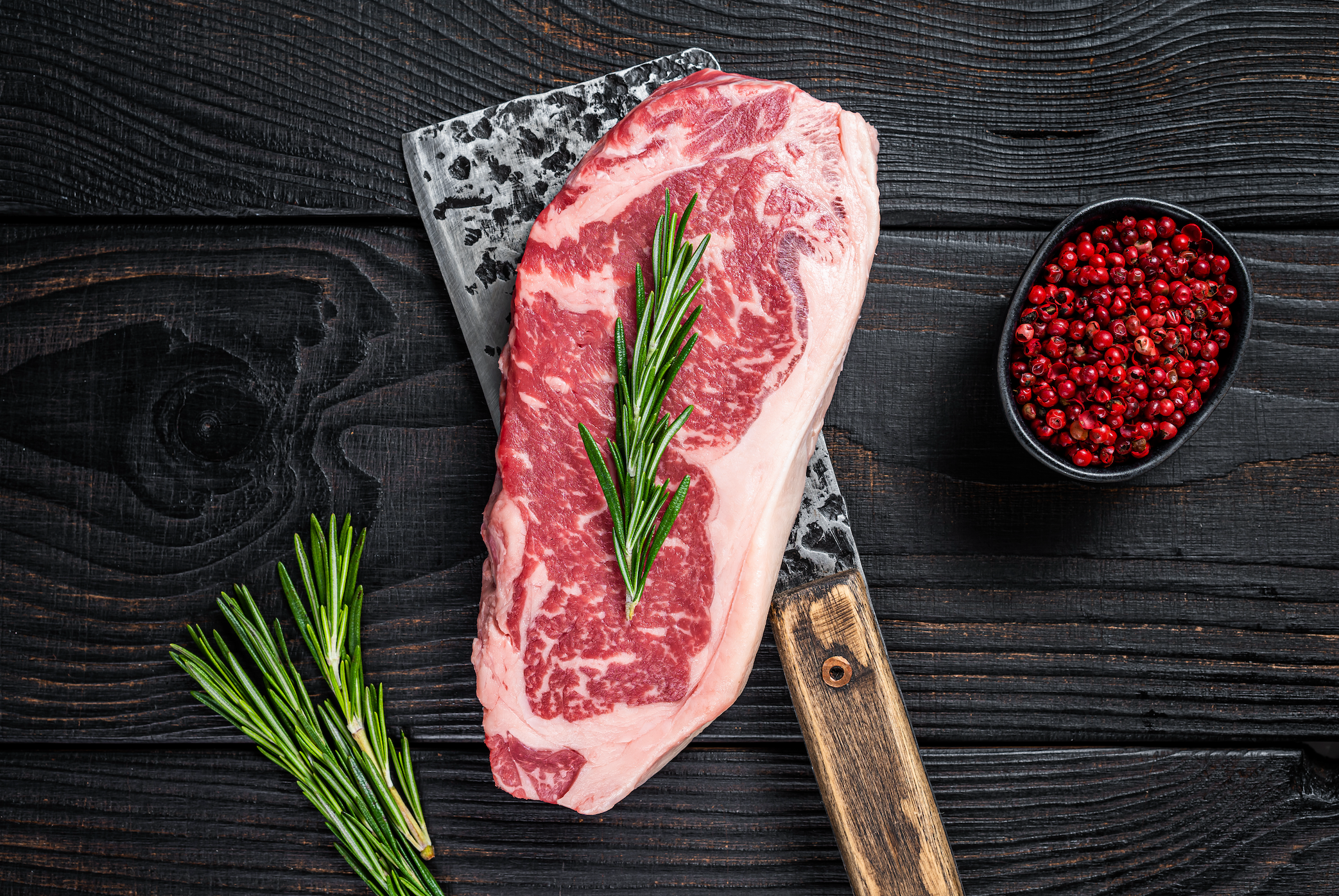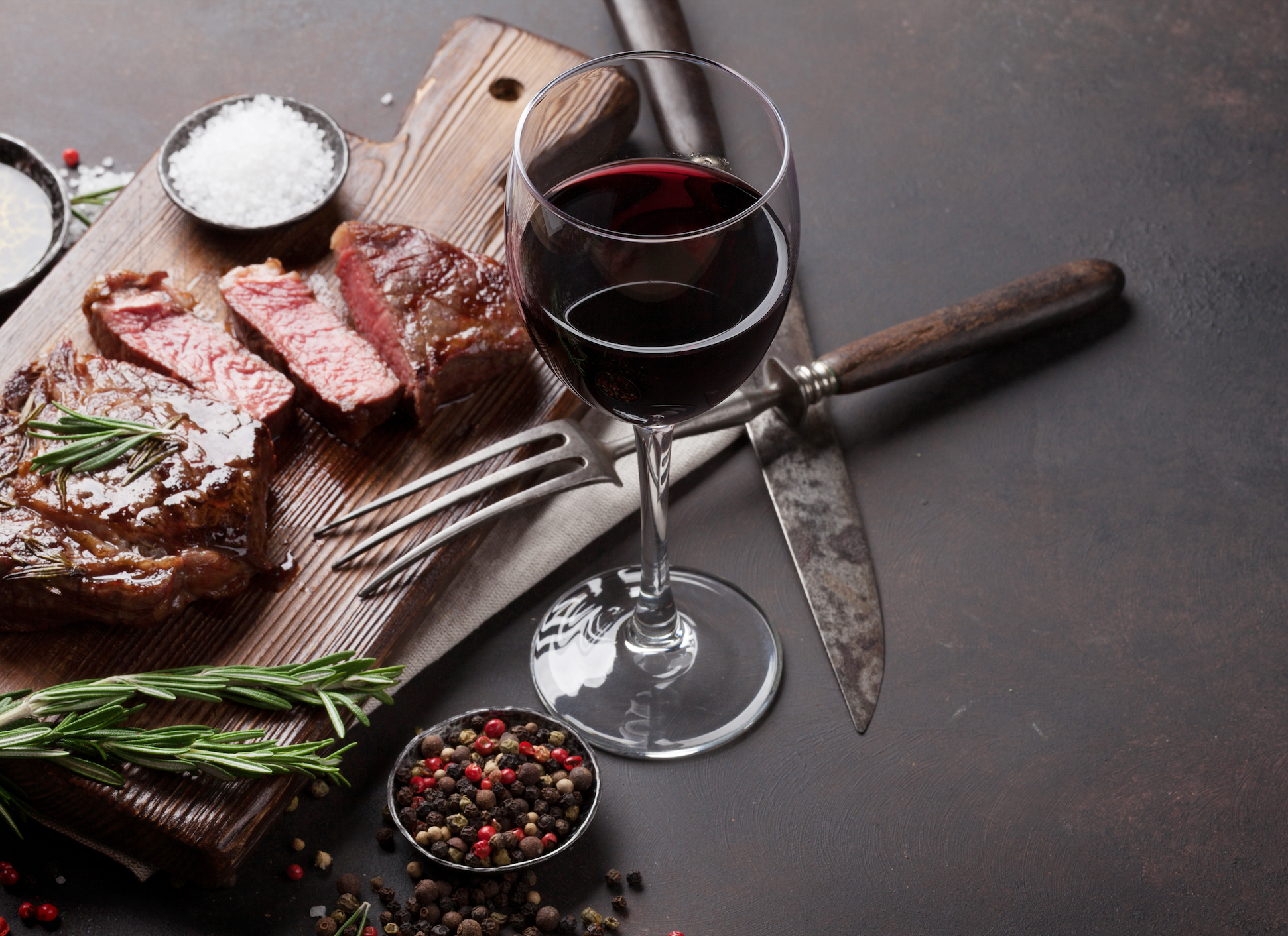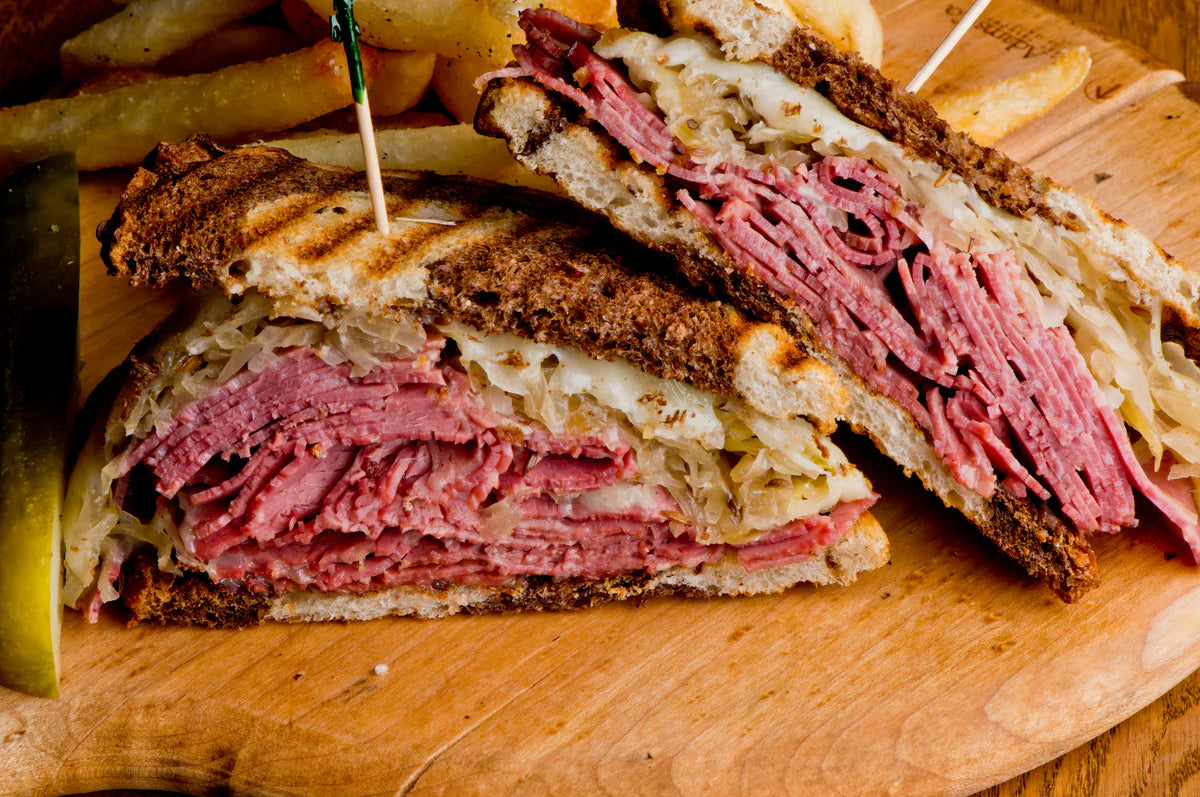
NY Strip vs. Ribeye: Expert Tips for Picking Your Favorite Cut of Beef
You can’t make a wrong decision when choosing between a ribeye or New York strip. Both cuts of beef are tender and tasty, making them a top choice on restaurant menus worldwide.
You’ve likely been in a steakhouse yourself, while skilled servers in black and white zig-zagged around tables in the dimly lit dining room, debating, “Should I have the New York strip or ribeye?” It’s a meat lover’s greatest problem!
Here’s the good news. You don’t have to feel weighed down by this delicious burden. You just have to understand the difference between NY strip vs. ribeye, what makes each cut special, and when they’re best enjoyed.
Keep reading for a complete guide to the nuances distinguishing NY strip vs. ribeye cuts. By the end, you can make an informed choice for your next steakhouse visit or grill session.
What is a NY Strip Steak?
NY strip steak comes from the short loin of a cow, which is located behind the ribs and along the spine. It’s a relatively lean cut of beef that tends to be slightly firmer than many of its counterparts, like filet mignon or flat iron steak, making it an ideal option for grilling.
What is a Ribeye?
Ribeye is taken from the area of a cow located between the sixth and twelfth ribs, also known as the rib primal. It’s the muscle of the cow that receives the least amount of exercise and, therefore, has a tender, highly marbled composition that’s superior for roasting.
NY Strip vs. Ribeye: What’s the Difference?
There are more differences to consider when researching ribeye vs. strip than where each cut comes from on the cow. Both are distinct in appearance, taste, and texture, providing dining experiences that are beyond compare.
Here are a few of the critical differences between New York strip steak vs. ribeye to be aware of:
Fat Content
Regarding marbling, the strip steak vs. ribeye battle isn’t a fair fight. Ribeye has a far higher fat-to-meat ratio, so it’s heralded as the definitive beef indulgence. Little pearls of fat hide between the soft tissue layers, releasing flavor bursts and naturally marinating the ribeye as it roasts. The result is a succulent texture that’s soft and buttery.
However, that doesn’t mean the NY strip doesn’t contain fat content. It’s quite the contrary. New York striploin is known for the distinctive fat strip along the back edge of the cut, and it’s this part that renders and crisps during the grilling process, giving the meat a charred and juicy texture.
Flavor
No two cuts of beef are identical in flavor, and ribeye vs. New York cuts are no exception. Much of the variance in taste comes from the cooking methods used to prepare them.
NY strip steaks are best cooked on a grill or seared in a hot pan, while ribeye is typically roasted or seared in a pan but finished in the oven. The two cuts also vary in flavor without differences in preparation.
You can expect a bold, earthy, and slightly salty bite when enjoying a NY strip steak (vs ribeye). When grilled, this cut also gains a caramelized taste and texture, adding a delicious intensity.
Ribeye, on the other hand, is less obviously “meaty” when compared to strip steak. Instead, it has a more subtle flavor that’s creamy and rich on the palate. Due to its delicate savoriness, ribeye should always be seasoned simply with freshly cracked pepper and coarse-grained salt.
Texture
How a piece of meat feels in your mouth significantly impacts the eating experience. In the case of ribeye vs. new york steak, you can expect two different consistencies when savoring each cut.
The lean muscle fibers in NY strip steaks create a chewy texture without being tough or rubbery. It’s ideal for those who prefer a hearty, meaty bite. It also has a crisp char outside that adds contrast, giving diners a satisfying smoky crust and a warm, mouthwatering center.
Ribeye, however, is all about the smooth, velvety mouthfeel. Each bite feels luxurious as the succulent juices are released. There’s less char on the exterior, but what it lacks in caramelization, it makes up for in divine indulgence. Luckily, there are no wrong answers in the NY strip vs. ribeye debate.
Cooking Methods
A nuanced approach is required to bring out the best flavor and texture in ribeye and NY strip steaks. The NY strip, for instance, requires high heat to achieve the perfect sear on each side, so grilling and pan searing are the preferred methods for this cut.
In contrast, ribeye is best prepared with low and slow cooking methods like roasting, as it allows the fat to fully render and serve as a natural baste for the meat. Knowing how to cook beef is an essential skill for meat lovers.
How to Cook a NY Strip Steak
Once you’ve mastered the craft of cooking an exceptional NY strip, you’ll have a rewarding skill that’ll keep guests coming back to your table for as long as you’re willing to feed them. This cut of beef is a beloved steakhouse favorite, and with just a few tips and tricks, you can prepare expert-level NY strip steaks from the comfort of your own home.
Here are our top tips to follow:
Temper Your Steak Before Cooking
Before bringing your NY strip anywhere near a pan or grill, allow it to sit at room temperature for 30-45 minutes. That is critical for getting an even cook throughout the steak. If your steak is still cold from being refrigerated, it can cause the exterior to overcook before the interior reaches your desired doneness.
Give Reverse Searing a Try
Reverse searing is a cooking technique where the steak is slow-cooked at a low temperature first, then seared at high heat to finish. Many chefs prefer it because it allows for precise control over the steak's internal temperature, giving a perfectly cooked interior with a consistent level of doneness. The slow start renders fat and tenderizes the meat, while the final sear creates a flavorful crust.
Let the Steak Rest for at Least 10 Minutes
Resting your NY strip steak will allow the meat to reabsorb its juices and become fully tenderized. If you cut it too early, these precious juices will drip out, and the overall texture of your steak will be affected. Trust us, it’s worth the wait!
How to Cook a Ribeye
Whether you're a seasoned home chef or just beginning your culinary adventure, we’re here to guide you through the process of cooking a ribeye that’ll leave your taste buds dancing with delight. So, grab your apron, sharpen your knives, and get ready to learn our best tips and tricks!
Season With Salt Well in Advance
It’s a simple trick, but it really makes a difference to the flavor of your ribeye! Season your steak with coarse-grained salt approximately 45 minutes before you cook it. You’ll be amazed how much it enhances the taste of your dish. Salt also tenderizes the meat and makes it easier to achieve that perfect golden-brown sear.
Sear in a Cast Iron Skillet
No other pan conducts heat better than a cast iron skillet. It provides an intensely hot, dry surface for a perfect sizzle when your ribeye touches the pan. And then there are the layers of oil and seasonings your cast iron builds up over time— all of which add complexity and deliciousness to your dish!
Baste With Butter and Fresh Herbs
Basting is simply the act of layering flavor over your steak as it cooks. The world’s best chefs use this technique to seal in juices and enhance the savory sophistication of ribeye steak. Herbs like thyme and rosemary are a match made in heaven, accentuating the meat’s natural flavors with their fresh aromatics. For best results, baste your steak every 1-2 minutes until it’s reached your desired doneness.
Shop High-Quality Beef Cuts from Herd 77
New York Strip and ribeye steaks are two popular cuts of beef known for their distinct characteristics. Cut from the loin, the New York Strip offers a leaner, firmer texture with a bold, beefy flavor. It's prized for its tenderness and is often less marbled than the ribeye.
In contrast, cut from the rib section, the ribeye boasts rich marbling, resulting in a juicier, more flavorful steak with a buttery, melt-in-your-mouth quality. Both are delicious options, but choosing between them depends on personal preferences for texture and flavor.
We’ve discussed just about everything there is to know about New York strip vs. ribeye in this article. But before we end this strip steak vs. ribeye conversation, we should mention another vital aspect behind these phenomenal cuts, and that’s where the beef comes from.
How you source your beef is integral to how the product tastes. It’s also essential in the journey towards more mindful meat production and consumption.
At Herd 77, we’re doing our part to achieve a more sustainable and humane food system. Our pasture-raised cattle roam freely, just as nature intended, and are always treated with absolute care and respect. We never use hormones, steroids, or other harmful additives when raising our cattle.
That means complete and total peace of mind, knowing you’re receiving prime quality beef that’s 100% ethically sourced, full of flavor, and family-farmed. Now that’s a winning combination!
Are you ready to have premium, pasture-raised beef delivered directly to your doorstep? Browse our ribeye for sale and NY strip steak for purchase today.


